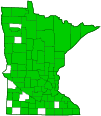dot-tailed whiteface
(Leucorrhinia intacta)
Conservation • Description • Habitat • Ecology • Distribution • Taxonomy
|
|
|||||||||||||
Description |
Dot-tailed whiteface is a small skimmer, 1 5 ⁄16″ to 1 7 ⁄16″ long. The male has a white face, black thorax, black abdomen, and clear wings. There is a single, squarish, yellow spot on the top (dorsal surface) of segment 7 of the abdomen. The thorax is black. The face is white. The wings are clear except for a small dark patch at the base of the hindwings and the stigma at the leading edge of each wing. The female and the juvenile are more colorful. There is a single dorsal yellow spot on segments 2 through 6. The spot extends nearly the length of the segment. There is also a squarish, yellow, dorsal spot on segment 7, and yellow stripes on the side (lateral surface) of segments 4 and 5. As the female matures the dorsal spots on segments 2 through 6 fade. The lateral stripes often fade as well, though they last longer than the dorsal spots. The dorsal spot on segment 7 does not fade. With the faded spots an older female looks much like a male, but it rarely becomes as dark as the male. About 18% of the females have a conspicuous amber patch on the basal 20% of the wing (where the wing attaches to the thorax). |
Size |
Total length: 1 5 ⁄16″ to 1 7 ⁄16″ |
Similar Species |
Hudsonian whiteface (Leucorrhinia hudsonica) is slightly smaller. Juveniles have a triangular, not squarish, spot on segment 7 of the abdomen. The dark patch on the hindwing often has pale veins. |
Habitat |
Marshy ponds, lakes, slow streams, and bogs. |
Ecology |
Season |
Mid-May to late September |
Behavior |
Adults perch horizontally on the ground and on floating vegetation, especially water lilies. They hunt from shoreline vegetation. |
Life Cycle |
The female hovers just above the surface of shallow water near aquatic plants that touch the water surface. She dips the tip of her abdomen into the water to deposit the eggs. The male guards the female as she deposits her eggs. The naiads live in submerged vegetation. They emerge as adults at night. |
Naiad Food |
Mayfly naiads, mosquito larvae, other aquatic fly larvae, freshwater shrimp, small fish, and tadpoles. |
Adult Food |
Mosquitoes, flies, butterflies, moths, mayflies, and flying ants or termites, and other soft-bodied flying insects. |
Distribution |
||
|
Sources Biodiversity occurrence data published by: Minnesota Biodiversity Atlas (accessed through the Minnesota Biodiversity Atlas Portal, bellatlas.umn.edu, 7/28/2025). |
|
| 7/28/2025 | ||
Occurrence |
||
Common |
||
Taxonomy |
|
Order |
Odonata (dragonflies and damselflies) |
Suborder |
|
Superfamily |
Libelluloidea |
Family |
Libellulidae (skimmers) |
Genus |
Leucorrhinia (whitefaces) |
Subordinate Taxa |
|
|
|
Synonyms |
|
Diplax intact Diplax intacta |
|
Common Names |
|
dot-tailed whiteface |
|
Glossary
Stigma
In plants, the portion of the female part of the flower that is receptive to pollen. In Lepidoptera, an area of specialized scent scales on the forewing of some skippers, hairstreaks, and moths. In other insects, a thickened, dark, or opaque cell on the leading edge of the wing.
Visitor Photos |
||
Share your photo of this insect. |
||
This button not working for you? |
||
Crystal Boyd |
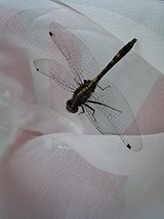 |
MinnesotaSeasons.com Photos |
||
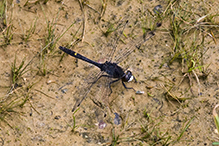 |
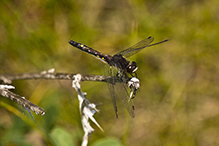 |
|
Male |
Male |
|
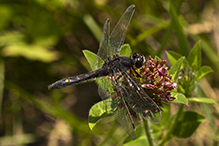 |
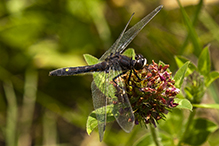 |
|
Male |
Male |
|
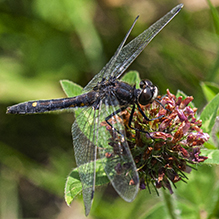 |
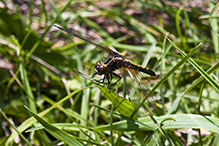 |
|
Female |
||
|
||
|
||
Male |
|
|
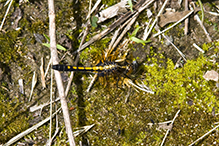 |
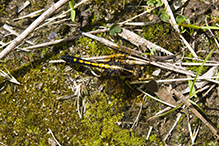 |
|
Female |
Female |
|
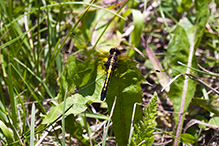 |
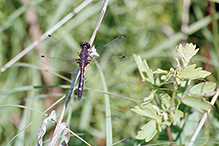 |
|
Female |
Darkened female |
|
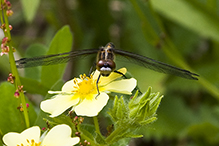 |
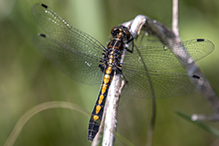 |
|
Juvenile |
Juvenile |
|
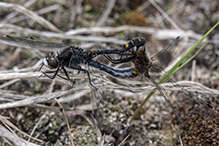 |
||
Mating pair |

Slideshows |
Dot Tailed Whiteface |
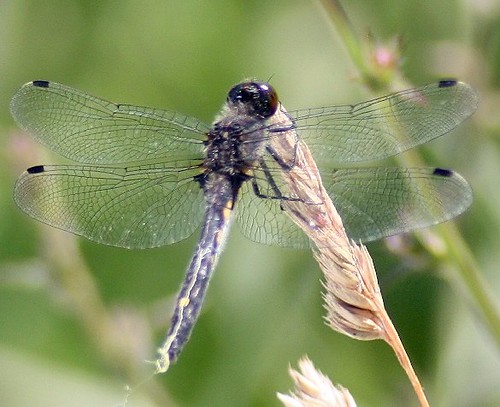
|
About
Copyright DianesDigitals |
Leucorrhinia intacta (Dot-tailed Whiteface) |
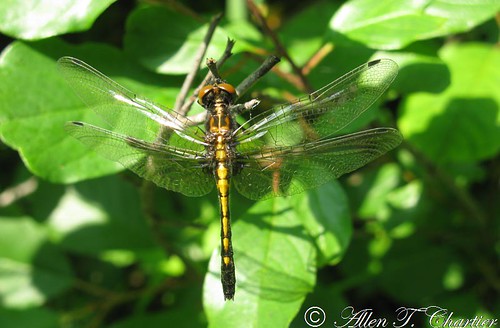
|

Visitor Videos |
||
Share your video of this insect. |
||
This button not working for you? |
||
Dan W. Andree |
720p. Dot-tailed Whiteface dragonfly |
About
I almost bypassed this small dragonfly until I got closer and noticed not only why it got the name Dot-tailed Whiteface, but that it also made some interesting head movements at times. |
Other Videos |
||
Dot-tailed Whiteface (Libellulidae: Leucorrhinia intacta) Mating |
About
Uploaded on Jul 7, 2009 Photographed at Grand Forks, North Dakota (07 July 2009). Go here to learn more about this species: http://minnesotaseasons.com/Insects/dot-tailed_whiteface.html |
Dot-tailed Whiteface (Libellulidae: Leucorrhinia intacta) Male |
About
Uploaded on Jul 4, 2009 Photographed at Grand Forks, North Dakota (04 July 2009). Go here to learn more about this species: http://minnesotaseasons.com/Insects/dot-tailed_whiteface.html |
Dot-tailed Whiteface (Libellulidae: Leucorrhinia intacta) Female |
About
Uploaded on Jun 17, 2011 Photographed at Fisher, Minnesota (17 June 2011). Thank you to DeeDee (@Bugguide.net) for confirming the identity of this specimen! |
Dot-tailed Whiteface Dragonfly (Libellulidae: Leucorrhinia intacta) Close-up |
About
Published on May 28, 2012 Photographed at Fisher, Minnesota (28 May 2012). |

Visitor Sightings |
||
Report a sighting of this insect. |
||
This button not working for you? |
||
| Crystal Boyd 5/31/2013 |
Location: Savage Fen SNA |
 |
MinnesotaSeasons.com Sightings |
||

Created: 7/23/2006 Last Updated: © MinnesotaSeasons.com. All rights reserved. |
